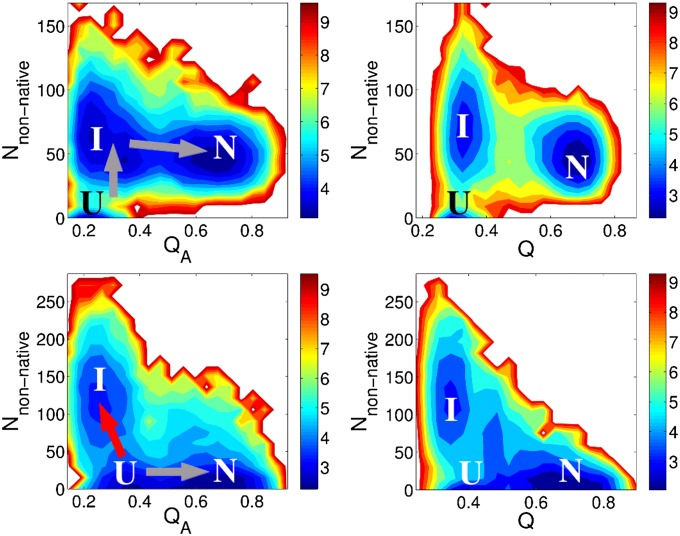Fig. 6.
For Arc repressor (Upper) and Lambda repressor (Lower), free-energy surfaces at the folding temperature are plotted as a function of the number of nonnative intermonomeric contacts Nnonnative, QA, and Q of the complex. I, U, and N stand for intermediate, unbound, and native bound states, respectively. Nonnative interactions have different consequences for obligatory and nonobligatory dimers. In the case of obligatory dimers (Upper), states stabilized by nonnative interactions correspond to on-pathway (indicated as gray arrow) intermediates that can catalyze the association process through fly-casting mechanism. In the case of nonobligatory dimers, these states appear to be off-pathway (indicated as red arrow) and can, thereby, impede binding by acting as a trap.

